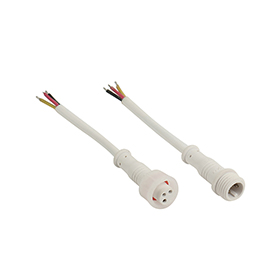News


News

Decoding IP Ratings for LED Waterproof Cables: From Technical Specifications to Practical Applications
Release time:2025-07-21
viewed:227
In the realm of outdoor and industrial lighting systems, LED waterproof cable has become the backbone of reliable electrical infrastructure. The International Protection (IP) rating system serves as the universal language for evaluating these cables' resistance to environmental factors. This article examines how IP67 and IP68 standards fundamentally differ in their protection capabilities, and how these differences translate into specific application scenarios for LED waterproof cable installations.

The IP coding system's two-digit structure reveals critical information about LED waterproof cable capabilities. The first digit (6 in both IP67 and IP68) indicates complete dust protection, while the second digit defines liquid resistance. IP67-rated LED waterproof cable can withstand temporary immersion in 1 meter of water for 30 minutes, making it suitable for moderate water exposure. In contrast, IP68-certified LED waterproof cable endures continuous submersion beyond 1 meter under specified pressure conditions, often required for permanent underwater applications.
Manufacturers achieve these ratings through distinct engineering approaches. IP67 LED waterproof cable typically employs compression seals and multi-layer jacketing, while IP68 versions incorporate more advanced features like pressure-balanced venting systems and marine-grade polymer sheathing. The cable diameter also plays a crucial role - thicker insulation in high-IP LED waterproof cable enhances protection but may reduce flexibility in tight installation spaces.
For urban landscape lighting and architectural accents, IP67 LED waterproof cable provides sufficient protection against rain and sprinkler systems. Marine applications and fountain lighting demand IP68-rated LED waterproof cable to survive constant water pressure and potential saltwater corrosion. Industrial environments present unique challenges where chemical resistance becomes as important as waterproofing, prompting specialized compound formulations in premium LED waterproof cable products.
The evolution of LED technology pushes IP standards to new limits. Emerging applications like underwater drone charging stations and floating solar farms drive demand for IP69K-rated LED waterproof cable capable of withstanding high-pressure, high-temperature washdowns. Smart lighting systems also create new requirements for hybrid cables that combine waterproofing with data transmission capabilities.
Understanding IP ratings transforms LED waterproof cable selection from guesswork to precision engineering. While IP67 covers most terrestrial applications, IP68 remains essential for permanent submersion scenarios. As lighting systems grow more sophisticated, matching the correct IP rating to operational environments ensures both safety and longevity. The continuous advancement of waterproofing technologies promises even more robust solutions for tomorrow's challenging installations.